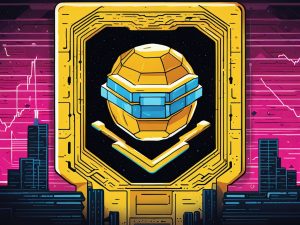Bitcoin Miners Face Challenges with Halving and High Hashrate
Bitcoin miners are facing a difficult situation as the halving approaches. The halving is an event that occurs approximately every four years, reducing the block reward for miners. However, despite the upcoming halving, the hashrate of the Bitcoin network remains very high. This presents a problem for miners as higher hashrate results in increased electricity consumption and costs.
The Bitcoin Halving and Current Hashrate Level
The Bitcoin protocol dictates that miners who validate a block are rewarded with BTC. This reward is halved every 210,000 blocks. With the next halving approaching at block number 840,000, there are now less than 10,000 blocks left until the event. Given that it takes around 10 minutes to mine a block, the halving is estimated to occur around mid-April.
The Reduction in Block Reward
Miners earn income through both the block reward and transaction fees. Starting from April, the block reward will be reduced to 3.125 BTC per block from the current 6.25 BTC. Additionally, transaction fees can vary over time but are limited by the size of each block. Therefore, not only will fees be lower compared to the current reward, but they will also be lower compared to the new reward after the halving.
The Problem of High Electricity Consumption
A major challenge for miners is their high electricity consumption. Mining is a competition where higher hashrate leads to greater rewards. To cope with this, many miners join mining pools and consume significant amounts of energy. With the halving approaching and potential decreases in BTC price, miners may face economic sustainability issues. They may need to turn off less efficient machines and reduce revenue opportunities to mitigate costs.
The Relationship Between Hashrate and Halving
The high hashrate exacerbates the challenges faced by miners. Despite the launch of more efficient machines, energy consumption remains high. This makes it even harder for miners to handle the halving of rewards. Those without efficient machines may need to stop mining unless they have low-cost electricity or BTC price rises. While a reduction in hashrate is expected after the halving, it may not necessarily result in a collapse as newer, efficient machines are prevalent.


 By
By
 By
By


 By
By